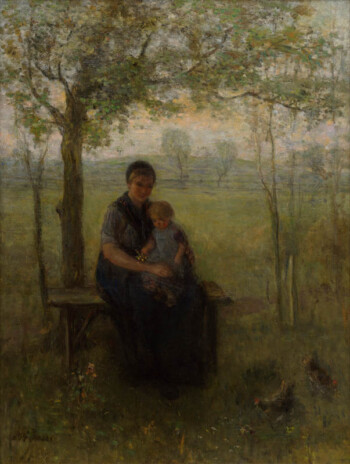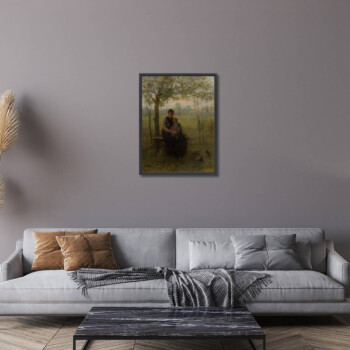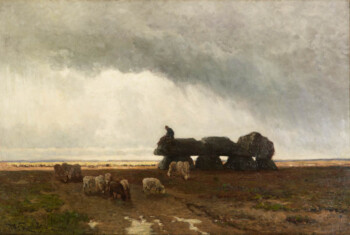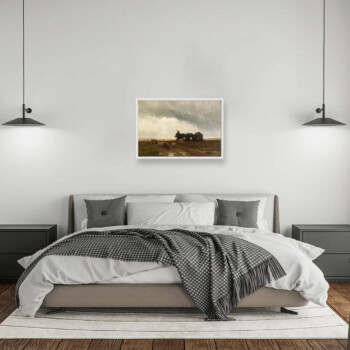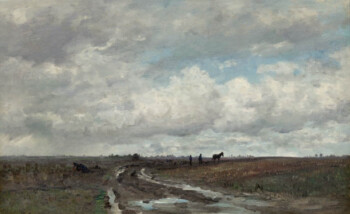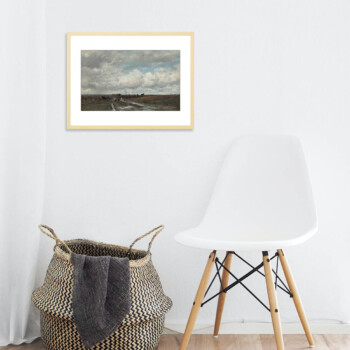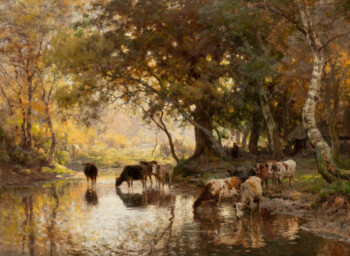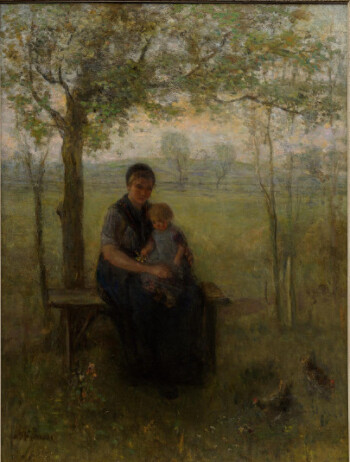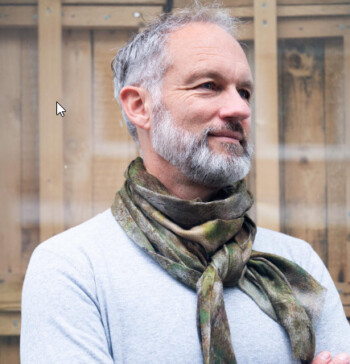Hague School
The Hague School was a movement of like-minded Dutch painters who worked in The Hague or were otherwise connected to the residential city between 1860 and 1900. The members rebelled against the romantic tradition that was prevalent in Dutch painting around the middle of the nineteenth century and which idealized reality.
The painters of the Hague School, including Jozef Israëls, the brothers Jacob and Willem Maris, Willem Roelofs, Constant Gabriël, Hendrik Willem Mesdag and Anton Mauve, strove for a realistic representation. Characteristically, this representation also tried to be a mirror of the artist’s state of mind. They admired the French artists of the Barbizon School, who, like them, worked en plein air as much as possible. The subjects they chose were typically “Dutch”: polders, river landscapes, cows, sheep, windmills, fishing scenes, bomb barges and above all: large cloud formations. The representation of light and atmosphere was central.
Initially, the use of color of the Hague School was quite gloomy, with a certain emphasis on gray tones, which is why it was also called the “gray school”. Later, the Hague Schoolers were also influenced by French Impressionism: the use of color became lighter and the brush strokes looser. A number of younger painters took new, more modernist directions after 1885. However, an “after-flowering” of The Hague Schoolers would continue well into the twentieth century in the moody realistic style of their predecessors.
Jozef Israëls The Drenthe Madonna
€40,99 – €583,41 Select options This product has multiple variants. The options may be chosen on the product pageWillem Roelofs The Dolmen of Tynaarlo
€40,99 – €533,95 Select options This product has multiple variants. The options may be chosen on the product pageHendrik Willem Mesdag Landscape near Vries with a plowing farmer
€40,99 – €526,59 Select options This product has multiple variants. The options may be chosen on the product pageJulius van de Sande Bakhuyzen Resting cowherd on the bank of a tree-lined waterfront
€40,99 – €544,61 Select options This product has multiple variants. The options may be chosen on the product page

